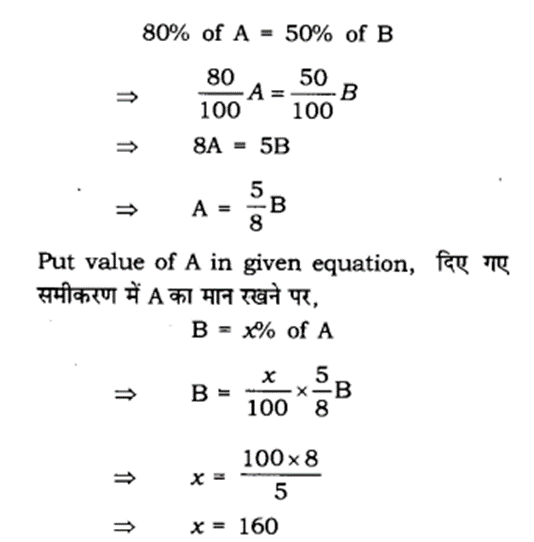प्रश्न और उत्तर का अभ्यास करें
8 प्र: संविधान में समग्र भारत का वर्णन किस रूप में किया गया है-
380 06530eda82bdcef5c28c6acb4
6530eda82bdcef5c28c6acb4- 1एक संघ राज्यfalse
- 2अर्ध-संघीयfalse
- 3राज्यों और क्षेत्रों का संघtrue
- 4आंशिक रूप से एकात्मक और आंशिक रूप से संघीयfalse
- उत्तर देखें
- Workspace
- SingleChoice
उत्तर : 3. "राज्यों और क्षेत्रों का संघ"
व्याख्या :
व्याख्या:- अनुच्छेद 1 (1) के अनुसार, भारत का अर्थ है भारत राज्यों का एक संघ होगा। राज्य और उनके क्षेत्र पहली अनुसूची में निर्दिष्ट अनुसार होंगे। भारत का क्षेत्र शामिल होगा
प्र: हाल ही में किस राज्य सरकार ने 'अडॉप्ट ए स्कूल, योजना के कार्यान्वयन का आदेश जारी किया?
379 0650af42356a7b2508c9cc381
650af42356a7b2508c9cc381- 1ओडिशाfalse
- 2महाराष्ट्रtrue
- 3कर्नाटकfalse
- 4तेलंगनाfalse
- उत्तर देखें
- Workspace
- SingleChoice
उत्तर : 2. "महाराष्ट्र"
व्याख्या :
1. हाल ही में, महाराष्ट्र सरकार ने 'अडॉप्ट ए स्कूल, योजना के कार्यान्वयन का आदेश जारी किया।
2. इस योजना के तहत, निजी संस्थानों, उद्योगों, और अन्य संगठनों को सरकारी स्कूलों को अपनाने और उनके विकास में योगदान करने के लिए प्रोत्साहित किया जाएगा।
प्र: हाल ही में अत्याधुनिक युद्धक टैंक, 'मर्कावा मार्क 5' का अनावरण किसने किया है?
379 06513e32d9c491b8125c15221
6513e32d9c491b8125c15221- 1उत्तर कोरियाfalse
- 2ईरानfalse
- 3तुर्किएfalse
- 4इज़राइलtrue
- उत्तर देखें
- Workspace
- SingleChoice
उत्तर : 4. " इज़राइल"
व्याख्या :
1. इज़राइल ने अपने अत्याधुनिक मुख्य युद्धक टैंक, मर्कावा मार्क 5 का अनावरण किया, जिसे “बराक” के रूप में जाना जाता है।
2. बराक टैंक बख्तरबंद युद्ध के क्षेत्र में एक उल्लेखनीय उपलब्धि का प्रतिनिधित्व करता है, जो अपनी रक्षा क्षमताओं को आगे बढ़ाने के लिए इजरायल की प्रतिबद्धता को दर्शाता है।
- उत्तर देखें
- Workspace
- SingleChoice
उत्तर : 3. "China"
प्र: निम्नलिखित में से कौन सी पहली मिसाइल है जिसे भारत में विकसित किया गया है?
378 0651eb25a0adf95da394e7537
651eb25a0adf95da394e7537- 1आकाशfalse
- 2पृथ्वीtrue
- 3अग्निfalse
- 4त्रिशूलfalse
- उत्तर देखें
- Workspace
- SingleChoice
उत्तर : 2. "पृथ्वी"
व्याख्या :
व्याख्या:-पृथ्वी मिसाइल सतह से सतह तक मार करने वाली सामरिक शॉर्ट-रेंज बैलिस्टिक मिसाइलों (एसआरबीएम) का एक परिवार है और यह भारत की पहली स्वदेशी रूप से विकसित बैलिस्टिक मिसाइल है। पृथ्वी का विकास 1983 में शुरू हुआ और इसका पहला परीक्षण 25 फरवरी, 1988 को श्रीहरिकोटा, शार केंद्र, पोट्टी श्रीरामुलु नेल्लोर जिला, आंध्र प्रदेश से किया गया था।
इसकी रेंज 150 से 300 किलोमीटर तक है। भूमि संस्करण को पृथ्वी कहा जाता है जबकि पृथ्वी I और पृथ्वी II श्रेणी की मिसाइलों के नौसैनिक परिचालन संस्करण को कोड-नाम धनुष (अर्थात् धनुष) दिया गया है। सभी मिसाइल कार्यक्रम डीआरडीओ के अंतर्गत आते हैं।
प्र: यदि A का 80%=B का 50% है और B = A का x%, तो x का मान ज्ञात करे।
377 0653f6a6bae39fbcb144621e3
653f6a6bae39fbcb144621e3- 1400false
- 2300false
- 3160true
- 4150false
- उत्तर देखें
- Workspace
- SingleChoice
उत्तर : 3. "160"
व्याख्या :

- उत्तर देखें
- Workspace
- SingleChoice
उत्तर : 2. "a-2, b-3, c-1"
- उत्तर देखें
- Workspace
- SingleChoice

